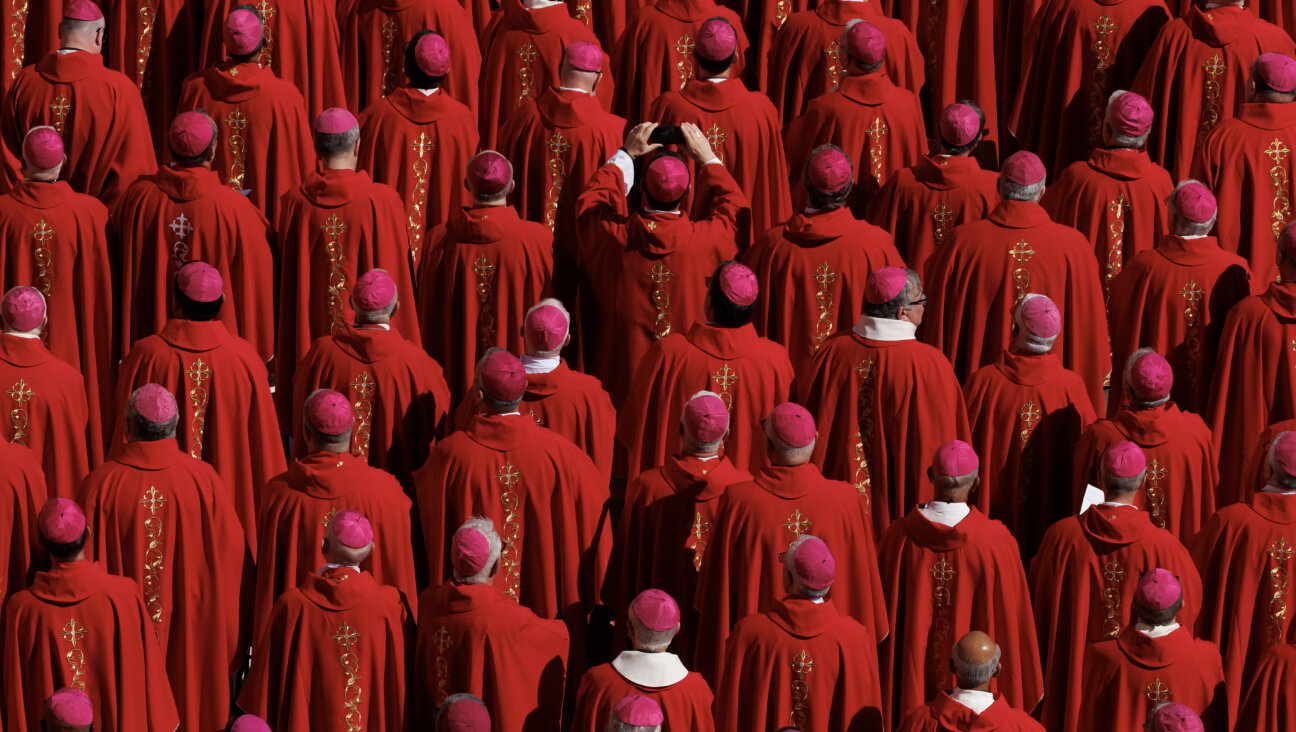New Dread, New Promise
It seems a lifetime ago, but it was only four or five years back that Israel’s independence day was marked by Jewish communities around America as a high point, a time to celebrate the transformative role of Jewish statehood in the lives and identities of Jews everywhere.
This year the celebrations — if that’s the right word — are muted, darkened by clouds of sadness and dread. Three and a half years of war and brutality have taken their toll in life and spirit, but that’s only part of the story. The larger dread is for what Israel has become in the world: an object of revulsion, the central icon in a worldwide wave of rage that seems to be transforming history and rolling back our dreams of progress and harmony while we look on helplessly.
What are we to think? Some of us cry out at the injustice of the world as though humanity were some alien species from which we could resign. Some of us shrink from Israel — or worse, turn on it — thinking there is some safety to be found in distance from what we are. Most of us simply live in dissonance, too exhausted to do more than hope that something, somehow, will change for the better.
In fact, something is changing right now. Whether it is for the better remains to be seen. Israel’s prime minister has launched an initiative that will dramatically change the dynamic of the region, one way or another. By removing troops and settlements from Gaza and a symbolic stretch of the northern West Bank, Prime Minister Sharon hopes to reduce the friction, as he puts it, between Israel and the Palestinians. If it succeeds, the plan could lead to an improved atmosphere in the region. With luck and wisdom — both commodities in short supply these days — the improvement could reverberate more broadly around the world. Alternatively, Sharon’s plan could aggravate the tensions and make things worse. That would be bad news not just for Israel, but for everyone else in the global village. The stakes are enormous for all of us.
Much depends on the willingness of European and moderate Arab leaders to reserve judgment and give the plan a chance. Just as important, though, is the enigma of Sharon himself. Does he envision the Gaza disengagement as the first step in a broader compromise, ultimately making room for a viable Palestinian state on most of the West Bank? Or does he intend to be rid of Gaza simply to change the demographic balance in Israel, leaving Israel free to stand pat in the West Bank for another generation or two? Will he work to build a stable Gaza as the nucleus of a future Palestine? Or, as his detractors suspect, is he hoping Gaza will descend into chaos, allowing Israel to argue that further withdrawal is impossible?
There’s evidence enough on both sides to support both readings of Sharon’s plans. It’s telling that those who know him best are convinced — whether or not they approve — that he means to go the distance and get Israel out of most of the West Bank. Likud moderates, Labor Party leaders and settler leaders are all convinced Sharon has launched Israel and Palestine on a path toward a genuine two-state solution. The theories of a devious plan to halt further movement, widespread though they are, belong entirely to those who watch him from afar.
What’s important, though, is that events will soon be out of Sharon’s hands. Whatever he intends, the future evolution of Gaza and the West Bank will depend in large measure on what others do: how the Palestinians use the autonomy they acquire, what sorts of aid, advice and pressure they get from abroad and how the rest of the world responds to Israel’s efforts. The safer Israelis feel, the more freedom the Palestinians will enjoy, and vice versa.
Much has been made in recent days of the potential Sharon’s plan offers Palestinians as a sort of second Balfour Declaration, holding out a conditional promise of future life of dignity and independence.
It holds the same potential for Israel. Those of us who hold Israel’s safety dear, and whose lives are so bound up with it, owe it to ourselves and the world to help make it work in any way we can.
The Forward is free to read, but it isn’t free to produce

I hope you appreciated this article. Before you go, I’d like to ask you to please support the Forward.
Now more than ever, American Jews need independent news they can trust, with reporting driven by truth, not ideology. We serve you, not any ideological agenda.
At a time when other newsrooms are closing or cutting back, the Forward has removed its paywall and invested additional resources to report on the ground from Israel and around the U.S. on the impact of the war, rising antisemitism and polarized discourse.
This is a great time to support independent Jewish journalism you rely on. Make a gift today!
— Rachel Fishman Feddersen, Publisher and CEO
Support our mission to tell the Jewish story fully and fairly.
Most Popular
- 1

Culture Cardinals are Catholic, not Jewish — so why do they all wear yarmulkes?
- 2

News School Israel trip turns ‘terrifying’ for LA students attacked by Israeli teens
- 3

Fast Forward Ye debuts ‘Heil Hitler’ music video that includes a sample of a Hitler speech
- 4

Fast Forward Student suspended for ‘F— the Jews’ video defends himself on antisemitic podcast
In Case You Missed It
-

Yiddish קאָנצערט לכּבֿוד דעם ייִדישן שרײַבער און רעדאַקטאָר באָריס סאַנדלערConcert honoring Yiddish writer and editor Boris Sandler
דער בעל־שׂימחה האָט יאָרן לאַנג געדינט ווי דער רעדאַקטאָר פֿונעם ייִדישן פֿאָרווערטס.
-

Fast Forward Trump’s new pick for surgeon general blames the Nazis for pesticides on our food
-

Fast Forward Jewish feud over Trump escalates with open letter in The New York Times
-

Fast Forward First American pope, Leo XIV, studied under a leader in Jewish-Catholic relations
-
Shop the Forward Store
100% of profits support our journalism
Republish This Story
Please read before republishing
We’re happy to make this story available to republish for free, unless it originated with JTA, Haaretz or another publication (as indicated on the article) and as long as you follow our guidelines.
You must comply with the following:
- Credit the Forward
- Retain our pixel
- Preserve our canonical link in Google search
- Add a noindex tag in Google search
See our full guidelines for more information, and this guide for detail about canonical URLs.
To republish, copy the HTML by clicking on the yellow button to the right; it includes our tracking pixel, all paragraph styles and hyperlinks, the author byline and credit to the Forward. It does not include images; to avoid copyright violations, you must add them manually, following our guidelines. Please email us at [email protected], subject line “republish,” with any questions or to let us know what stories you’re picking up.















